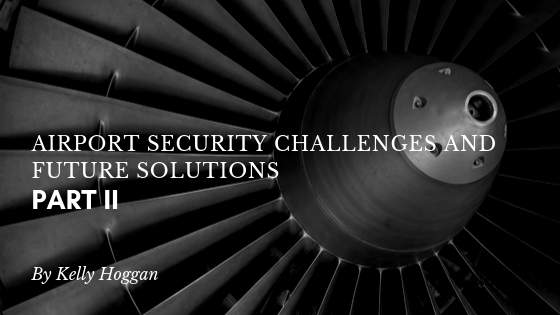This piece was originally published on H4-Solutions.com by Kelly Hoggan.
_
To improve the speed and flow of passengers going through its airport security screening checkpoints, the U.S.’s Transportation Security Administration has recently taken several promising steps. For one, TSA has been installing and then performance-testing what are called “automated screening lanes,” or ASLs. To date, TSA has been testing these new screening lanes at large, busy U.S. commercial air facilities. If they perform as expected, the government’s lead transportation security agency expects many more such ASLs to go into almost all other airports in the next several years.
The theory behind automated screening of airline passengers is that TSA can process multiple passengers going through such lanes at one time rather than in the current linear, one-at-a-time fashion. More experienced travelers, already familiar with the ins-and-outs of TSA security, will be able to easily bypass slower, less-experienced passengers by merely walking up to another screening slot in the lane.
As with all such new technologies and practices, TSA is currently stationing its officers near each lane to encourage passengers to “cut the line,” as it were, and head into an empty screening slot. Some travelers may at first be hesitant to go around slower passengers. However, TSA expects that with time will come widespread familiarity with ASLs. Eventually, ready acceptance of the new passenger “throughput” practices at automated screening lanes should lead to most travelers adjusting to the new screening slot process.
TSA is highlighting new features found at its automated screening lanes. These include:
- New stainless-steel countertops that enable multiple passengers to place their items into screening bins. Currently, passengers must line up behind each other, sometimes creating backlogs and bottlenecks.
- Automated conveyor belts to move travelers’ luggage through x-ray screening rather than operator-controlled belts.
- Also, automatic diversion of any carry-on luggage discovered to contain prohibited items. By quickly diverting the questionable luggage, other passengers’ belongings can continue uninterrupted through the screening process.
- New screening bins that are 25 percent larger than the present bins, enabling them to hold roll-aboard bags, which isn’t the case nowadays.
- The new screening bins will also feature radio frequency identification tags (RFIDs). These tags attach to each bin, increasing accountability for each traveler’s carry-on bag and other property such as coats, laptops and similar items.
The Transportation Security Administration expects passenger benefits to include far fewer interruptions, more available bins, more space for passengers (who sometimes complain of congestion at screening tables and x-ray machines) and a more-relaxed screening process all around.
Until testing and assessment of its automated screening lanes finishes, TSA also doesn’t expect any negative impact on its separate Precheck checkpoint entrances. Passengers approved for TSA Precheck usually spend less than 5 minutes going through security screening on most days, even during peak travel periods.
Once testing and evaluation of its new ASLs are fully completed and existing lanes are renovated to a high degree, the agency plans to include Precheck and the Department of Homeland Security’s Global Entry portals into the automated screening lane process.
TSA says that it’s working hard to field this innovative new technology out to as many airports as can handle it. In fact, the security agency predicts many more passengers per hour will be processed at its automated screening lanes in short order once everything is in place. ASLs should deliver good news to air travelers throughout the United States, in fact.


